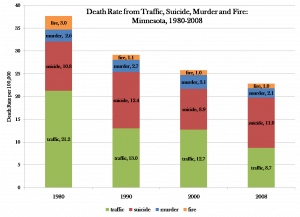 John Irwin, an inspiring and pathbreaking criminologist, passed away this weekend. We shared a few good conversations, often in the weight rooms of conference hotels, and a common lineage as descendants of Donald Cressey (his undergrad advisor and my advisor’s advisor). Professor Irwin’s powerful treatment of prisoner reentry and indictment of mass incarceration certainly altered my own research trajectory. I also find myself quoting him in lecture whenever a student makes a comment about senseless crimes or monster criminals (“Criminal behavior is human behavior!”).
John Irwin, an inspiring and pathbreaking criminologist, passed away this weekend. We shared a few good conversations, often in the weight rooms of conference hotels, and a common lineage as descendants of Donald Cressey (his undergrad advisor and my advisor’s advisor). Professor Irwin’s powerful treatment of prisoner reentry and indictment of mass incarceration certainly altered my own research trajectory. I also find myself quoting him in lecture whenever a student makes a comment about senseless crimes or monster criminals (“Criminal behavior is human behavior!”).
But my colleague Josh Page (shown at left) knew John Irwin far better than me, working closely with him on the recent Unlocking America report. Since Josh was corresponding with a reporter on an Irwin story today, I asked his permission to pass along some of these thoughts on pubcrim. I won’t reprint the entire message, since it wouldn’t be fair to the reporter posing the questions, but I do want to do all I can to introduce more people to Professor Irwin’s life and work. From Josh:
He redefined understandings about the origins and characteristics of prison culture and social relations (most notably in his book THE FELON and article with Donald Cressey, “Thieves, Convicts and the Inmate Culture.”). John traced changes in the prisoner culture and social relations over time in subsequent books (see his recent book THE WAREHOUSE PRISON). In short, he was a pioneer in understanding the “society of captives.”
He was one of the first scholars to tackle the issue of prisoner “reentry” (transition from prison back to the streets), arguing that the reentry process itself (not simply individual characteristics of ex-offenders) predictably lead many individuals back to crime and prison (see THE FELON). He insightfully compared prisoner reentry to the reentry of other returnees such as military veterans. In short, John analyzed “reentry” four decades before the topic was in vogue in policy and scholarly circles.
He wrote the only sociological study of jails (THE JAIL), correctly arguing that the jail is a central penal institution (it’s the hub of the criminal justice system); it functions to manage “the rabble” (those who are detached and disreputable) not deal with serious crime; and it is harsh punishment, which raises serious liberty and humanitarian issues since most people in jails are not convicted of crimes.
His book PRISON IN TURMOIL is the best sociological history of California prisons during the rehabilitative era (1945-1976). It shows how the rehabilitative regime planted seeds for its own destruction by producing a prisoner intelligentsia (which included John), spreading injustice through indeterminate sentencing and parole release, and running what John termed “chickenshit” programs. PRISONS IN TURMOIL also details the “law and order” revanche that started in California in the late 1960s and gained steam in the early 1970s. Lastly, it chronicles the deep divisions between ethnic-racial groups and ethnic-racial violence that increasingly marked California prisons in the 1970s onward.
His recent book LIFERS delves deeply into an issue that John was extremely passionate about… an issue that receives little attention from scholars: prisoners serving life sentences. In this book, he opens up yet another area of analysis that criminologists typically ignore. This book is very important in an age when policymakers and many scholars talk only about reforms concerning “non-violent” and “non-serious” offenders while suggesting that those with long sentences (particularly those serving “life”) deserve to rot in prison.
He knew from experience that dominant criminological/sociological views of prison culture and social relations were partial and misleading. He understood, for example, that much of the prison culture during the 1950s was imported from the streets (it was an adaptation of the “thieves code”), not simply a reaction to the deprivations of imprisonment, as scholars had previously argued.
Most importantly, he knew that prisoners were primarily people who “fucked up”–not inherently or permanently bad people who needed to be locked up for decades. He abhorred and fought against images of monster prisoners that has permeated public and political discourse and informed policy for decades. After all, he and many of his friends were “fuck ups” who did their time and moved on.
He was incredibly principled (and rather stubborn). He detested injustice and spent much of his life advocating for outcasts. He wrote an autobiography called “Rogue.” He was a “rogue” until he died. He was a “rogue” scholar who continually cut against the grain and didn’t submit to stifling academic conventions. He was a “rogue” social activist who fought for people that many people (and even many “liberals”) defined as hopeless losers. He was “rogue” in his personal life… he defied conventions he felt were repressive and/or unjust. He inspired and supported people who take risks and question/defy convention. He was one-of-a-kind.
John passionately felt that prison sentences were too long and very unjust. His mantra was “cut the damn sentences.” He also felt that the parole system didn’t work and was unjust in many ways. In short, he (and me) wanted to make clear in UNLOCKING AMERICA that good rehabilitation programs should be in every prison; however, we shouldn’t fool ourselves into thinking that rehabilitation alone will significantly decrease the prison population… sentencing and parole reform will.

 While the magnitude of the 2009 change is small — a drop of 5,739 inmates (or .4%) on a base rate of 1.4 million — any change in direction is meaningful after four decades of unabated growth. Nevertheless, I should note that the total number of state and federal prisoners actually rose in 2009, since the federal inmate count rose by 6,838. And, despite a crime rate that has fallen over at least the last two decades, the United States still maintains the world’s highest incarceration rate.
While the magnitude of the 2009 change is small — a drop of 5,739 inmates (or .4%) on a base rate of 1.4 million — any change in direction is meaningful after four decades of unabated growth. Nevertheless, I should note that the total number of state and federal prisoners actually rose in 2009, since the federal inmate count rose by 6,838. And, despite a crime rate that has fallen over at least the last two decades, the United States still maintains the world’s highest incarceration rate.
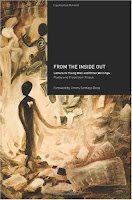

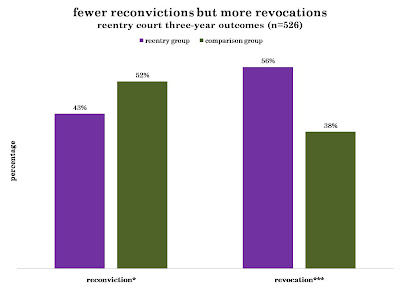

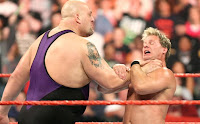



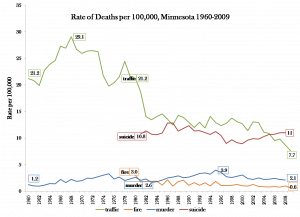 [
[